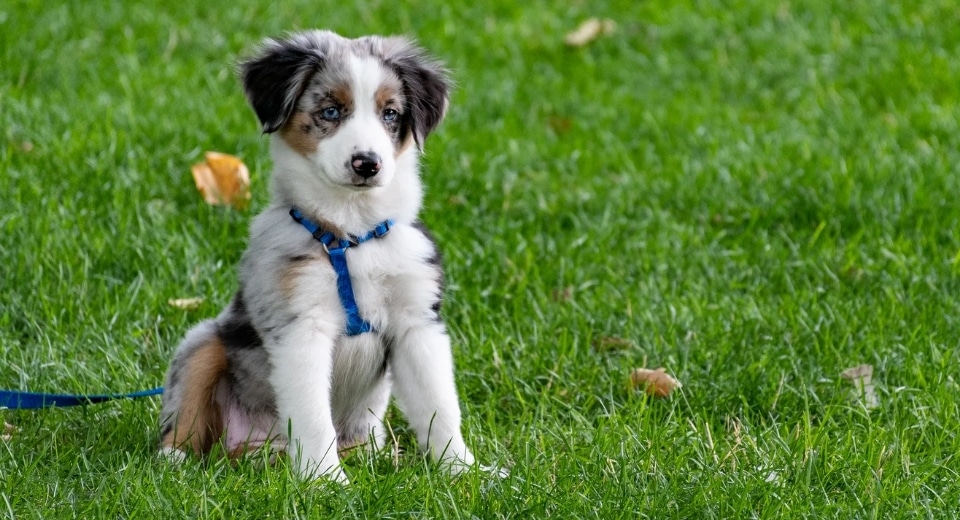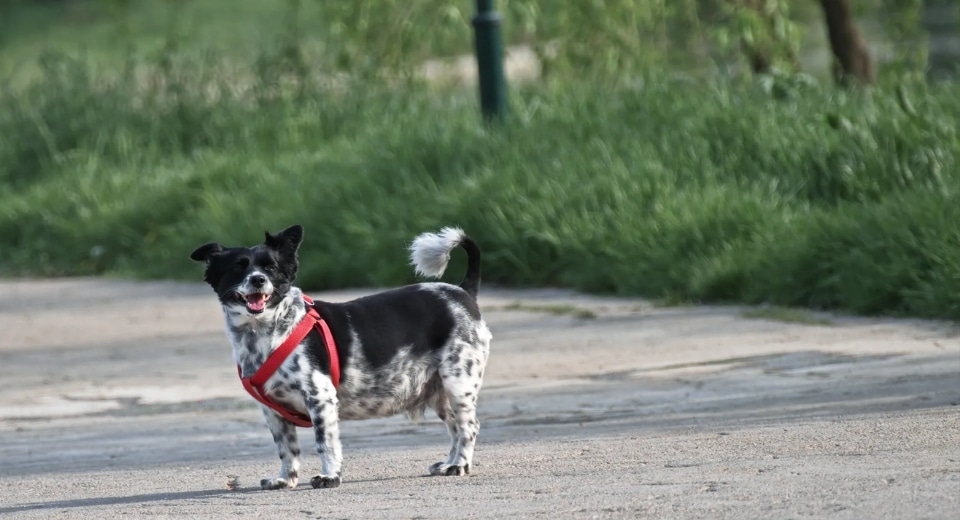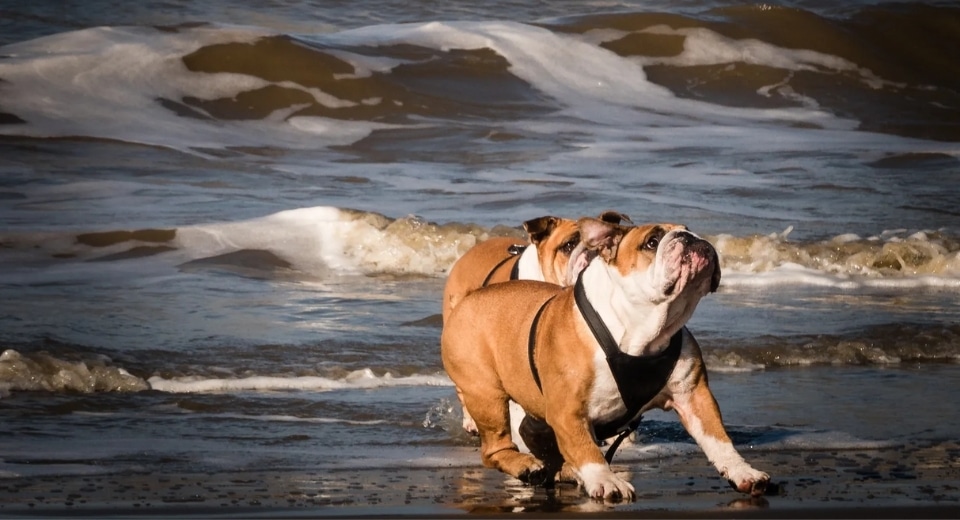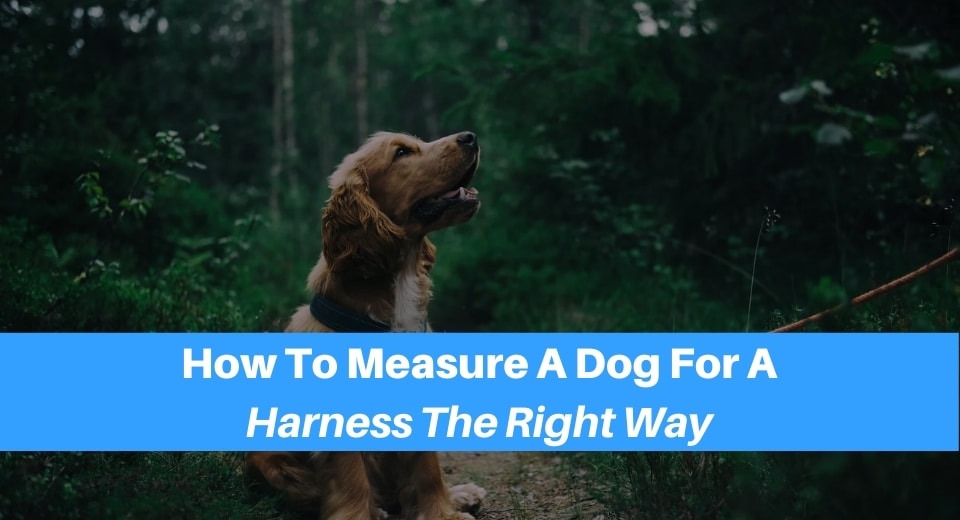There is nothing that will send your heart racing quite like the moment your dog escapes his harness. You have the worst thoughts crossing your mind as you hastily chase after your delighted pup. You don’t want it to be daunting and nerve-wracking to walk your pup. You put your trust in the harness to keep your dog safe. Other than the make and design of the harness, the proper size plays a large part in securing your dog. Understanding how to measure your dog for a harness is the most important factor.

How To Measure Your Dog For A Harness
What You Need
First off, you need something to measure your dog. From experience, a soft measuring tape is the best option. It’s flexible, wraps easily around your dog so you can get an easy reading. Make sure you get one that is long enough too.
The next thing you need is your adorable pup of course! Make sure he is calm and ready. He might not know what a measuring tape is and think it’s a nice new toy to pull on. So before you even attempt to measure, make sure he and the measuring tape have had a proper introduction.
The Parts of Your Dog to Measure
To ensure the proper fit, there are a few parts of your pooch you need to measure.
The Chest, Neck and Torso
Have your dog in front of you, facing towards the left or right, depending on whichever is more comfortable for you. Keep lots of treats handy to keep your dog satiated and calm.
Loop the measuring tape around where the collar would ideally go. This is to make sure the neck hole on the harness won’t be too tight. It should be the precise fit because the harness will be adjustable, there is no need to overcompensate.
Now slip the measuring take under your dog’s front legs and measure the circumference of his chest. Jot these numbers down so you don’t forget them!
The next step is to do the same thing around the lower chest/abdomen. This area is around the bottom of the ribcage. This may not be crucial to the sizing of the harness, but since you are measuring your dog anyway, you might as well. This will help if you decide to buy clothes for your pup down the line. If you are measuring for clothes, it’s also important to get the body length of your pup.
The Weight
The weight of your dog also plays a part in the perfect harness. Harness manufacturers will not only tell you the size of the harness but also the weight of the dog it is suited for. This is especially useful if you are looking for a harness online, or if you don’t have your dog with you.
A frequently asked question we see often is what to do if your dog is between sizes. Manufacturers won’t always have the perfect size for each and every breed. If this is the case, go for the larger size. Remember that harnesses and collars are all adjustable, it’s better to be able to fit into it and hopefully have your pup grow to fill it out than to not fit at all.

Adjust the Harness Correctly
Once you have gotten the harness on your dog, how do you know what the right fit should be? It cannot be too loose since that would render the dog harness useless. If it’s too tight, your dog will be extremely uncomfortable and it might even cut into the more sensitive parts of your pooch. To be able to fit two fingers in between the harness and your dog at any point would be the rule of thumb.
Which Harness is Best for My Dog?
An easy way to eliminate a lot of choices is to think about your dog. Does he like to pull the leash on walks? If so, get the anti-pull or front-clip harness, like any of these 7 most recommended anti-pull dog harnesses. It keeps your dog’s attention forward and prevents them from pulling on the leash.
If your dog is not a puller and you have done loose-lead training, then the general ones with the leash ring on the back are good.
The design (step-through, overhead, standard, etc) of the harness doesn’t affect the security too much. It’s about which is easier to get on your dog, and which provides a more comfortable fit. You can even make your own dog harness out of rope, and these rules we’ve detailed would still apply.
For us, we usually go with the overhead or step-through harnesses with padding. This allows for a more comfortable fit and more security due to the larger surface area.
What we do urge is to find an adjustable harness. You’re in luck since most options are. Other than the weight, you also should consider your dog’s coat. Some dogs shed and molt during certain times of the year and the harness may need to be adjusted a couple of times a year.
Extra Tips
Just because your dog is an extra-large in one brand, it doesn’t mean this rings true for another. Manufacturers don’t always base their sizes off of the same chart, so it’s important to still refer to their size chart before you pull the trigger. Other than the brand, style and design also contribute to the sizing.
The sizing is wrong if you notice hair loss where the straps touch your dog, or if you see any irritation on the skin or chafing. The next one is if your dog escapes or if the harness shifts from side to side and you often end up with the leash ring on the side of your pup instead of in the middle of his back. Another big indicator is if your dog isn’t excited for walks anymore. He refuses to put the harness on probably because it’s uncomfortable. Most dogs jump at the chance for a stroll.
For safety, try to search for ones made of breathable material, with a design that won’t snag fur, and is waterproof. Quick-drying material such as neoprene (scuba suit material) is a good idea since it won’t trap moisture. Reflective strips and bright colors add to your dog’s visibility and safety at night. Some harnesses even have a top handle for emergencies.

Conclusion
Measuring your dog for the right size is important. It contributes to the security and comfort of your dog as well as your peace of mind. Once you have found the perfect harness, we would still advise against leaving it on all day. While it’s important to find a breathable material (and hopefully one that is waterproof and has reflective trim), leaving it on all day could still make your pup uncomfortable.

